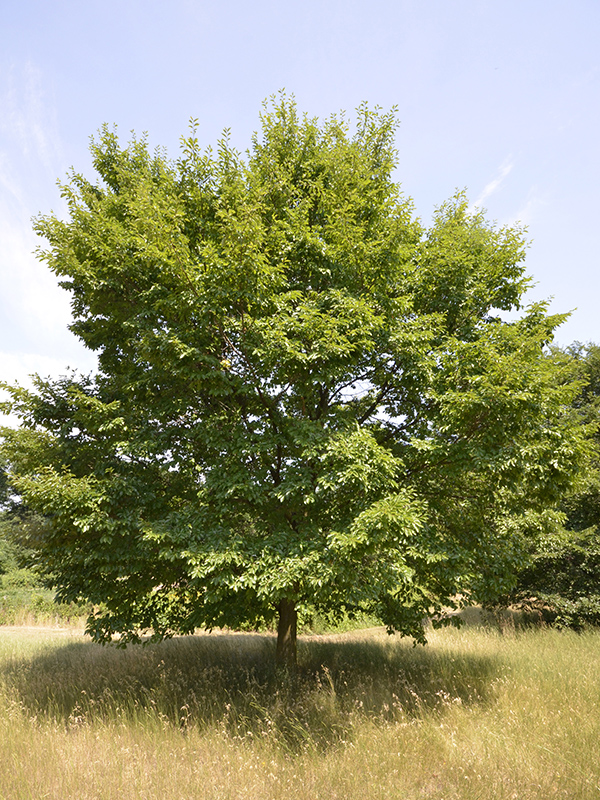
Woody > Ulmus > Ulmus davidiana > Ulmus davidiana var. japonica
Ulmus davidiana
var. japonica
Japanese Elm
Origin: North East Asia and Japan.
Mike's
Opinion


"
The Japanese Elm is native to Japan and Northeastern Asia where it primarily grows in swampy forests. Even though the tree prefers wet, moist soils it is quite adaptable to dry locations additionally it is tolerant of pollution including road salt.
Michael Pascoe, NDP., ODH., CLT., MSc. (Plant Conservation)
"
| Family |
| Ulmaceae |
| Genus |
| Ulmus |
| Species |
| davidiana |
| Category |
| Woody |
| Type |
| Tree (deciduous) |
| Variety |
| japonica |
| Pronunciation |
| USDA Hardiness Zone |
| 4 - 8 |
| Canadian Hardiness Zone |
| 3 |
| RHS Hardiness Zone |
| H7 |
| Temperature (°C) |
| -33 |
| Temperature (°F) |
| -27 |
| Height |
| 10 - 16 m |
| Spread |
| 7 - 10 m |
Photographs
Description and Growing Information
Flowering Period
| General Description |
| This tree varies in size, it can be short with a densely branched crown while some specimens are tall, single stemmed, with a narrow crown. The young shoots will usually have corky wings visible. It is not frost tender and can grow in soils from light sand to heavy clay. |
| Landscape |
| Is a widely planted as a street tree in Japan but can also be used as shade tree in medium to large gardens. |
| Cultivation |
| Prefers full sun and moist well-drained loamy soils, and grows best in soils with a pH from 5.5 - 8.0. |
| Shape |
| Upright, vase-shaped. |
| Growth |
| Medium |
| ID Characteristic |
| The tree keeps it dark green foliage well into the autumn before turning an outstanding yellow. It flowers in May before the leaves emerge with the seeds ripening from late May into June. Neither the flower or the fruit is ornamentally significant. |
| Pests |
| It has moderate resistance to Dutch Elm disease, but is not immune. It also resistant to the Elm leaf beetle. This tree is susceptible to Elm Yellows, a very aggressive disease, primarily spread by leafhoppers or root grafts. The disease is caused when phytoplasmas attack the phloem of the tree. There is no known cure for Elm Yellows. |
| Habitat |
| Usually grows around wetlands, near streams and valleys and slopes. |
| Bark/Stem Description |
| It has furrowed, greyish-brown coloured bark with the young branches being a yellowish-brown and hairy and tuberculate. |
| Flower/Leaf Bud Description |
| Buds are arranged alternately, are reddish-brown in colour and are usually between 3 - 7 mm long. |
| Leaf Description |
| The leaves, up to 11 cm in length may be ovate, simple, or obovate and have an oblique base. The adaxil is relatively course and hairy, while abaxil is also hairy but not to the same degree as the adaxil leaf surface. The abaxil surface also has small axillary tufts. The margins are doubly-serrate. |
| Flower Description |
| The flowers are wind pollinated, hermaphrodite and are light green and red colour. |
| Fruit Description |
| Samara (winged achene) are generally less than 15 mm long, are usually obovate to orbicular. Sometimes they are covered in tiny hairs but are generally smooth. |
| Colour Description |
| Leaves keep their green colour well into autumn, before changing to a deep yellow. The bark is greyish brown, and the buds are a purplish brown colour. Flowers are light green-yellow and red. |
| Texture Description |
| A medium textured tree. |
| Notable Specimens |
| Leith Links has 4 mature specimens, near the former Leith Academy building (largest with a bole-girth of 2.9m). Chalmers street entrance to the Meadows, University of Edinburgh, Edinburgh, Scotland. University of Sussex at Falmer, Brighton, England. The Royal Botanical Gardens, Burlington, Ontario, Canada. |
| Propagation |
| Sow fresh ripe seed in a cold frame with germination occurring quite rapidly. Pot on as you would any other nursery stock, transplanting to final locations after about two years growth in the nursery. |
| Ethnobotanical Uses (Disclaimer) |
| The tree in its native range is used as firewood. Medicinally it may be used as a demulcent, astringent and a diuretic. |
References
Everett, Thomas H.. Living trees of the world, New York: Doubleday, 1968. Print.


